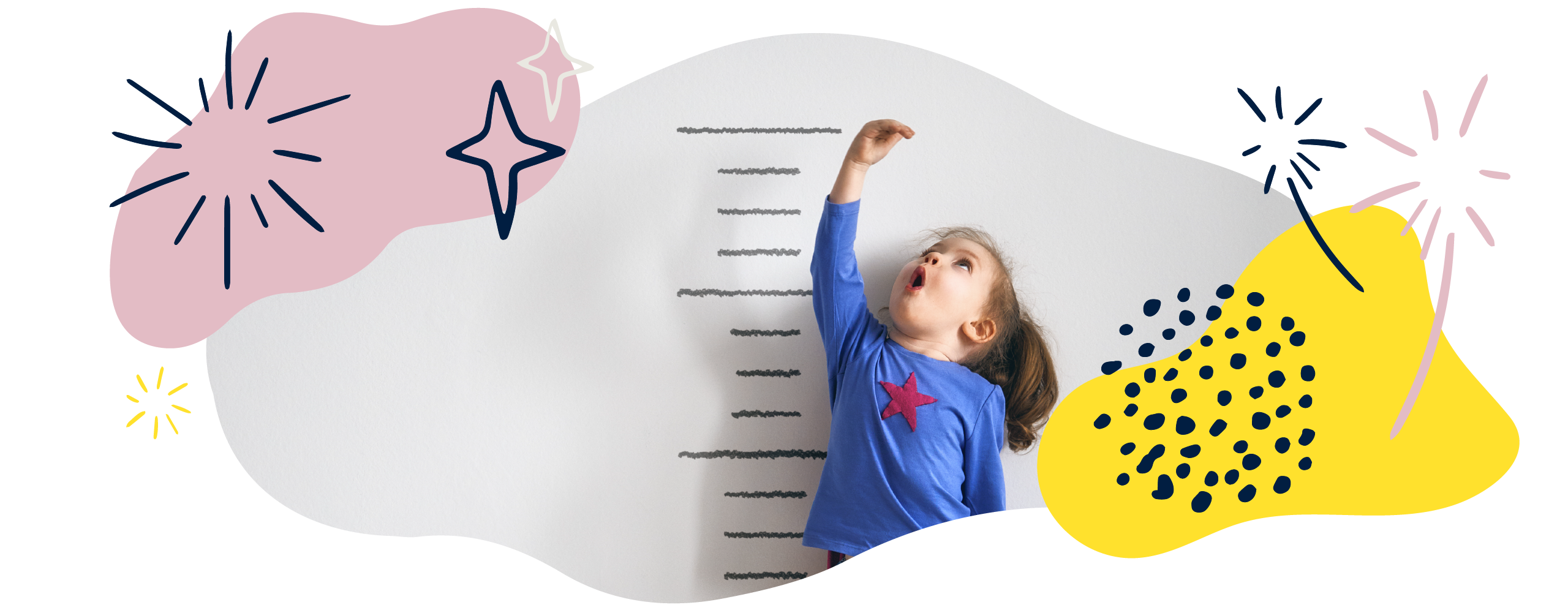Measurement
How far is it? Are we nearly there yet? How long will it take? These are questions we have heard our children ask countless times, and for good reason too: understanding measurements is essential to be able to quantify the world around us.
The measuring skills your child learns at primary school will go on to help them in everyday life, from cooking, to shopping, to getting to work on time!
Maths glossary
Use these quick links or explore our education glossary for simple definitions and examples of mathematical terms.
- Capacity is how much something holds. It is usually measured in litres and millilitres.
- Volume is the amount of space a liquid or gas can take up in a container.
- Mass is a measure of the amount of matter in an object. Mass is usually measured in grams (g) or kilograms (kg). It is often used interchangably with weight, although weight technically refers to the affect of gravity on an object instead of how much matter it contains.
- Perimeter is the border of a shape. The perimeter of a circle is its circumference.
- Standard units of measurements are units that are agreed by everyone, like metric and imperial units.
How to help your child at home
You don’t need to be an expert to support your child with maths! Here are four simple but effective ways you can help your child develop their understanding of measurement:
1. Measure everything
There are lots of opportunities to practise measuring at home. Try to measure practically wherever possible. Discuss and identify standard units (like cm, m, kg, g, l, ml) on food packaging, toiletries, or clothes labels.
You could also try using non-standard measures. For example, how many paces long is the kitchen? How many paperclips wide is the book?
2. Bake together
Help your child to measure ingredients when you are cooking. Identify the capacity/volume or mass/weight of ingredients, either using scales or less formal methods such as cups.
Another great idea is to look at recipes in both metric and imperial units. Older children may be able to convert between them. For more advice, take a look at our Cooking with kids blog post and this handy video.
3. Get outside
Getting outside allows children to apply their new understanding to everyday life. When going for a walk, measure the distance you have walked, calculate the perimeter of your local park to estimate the area. Maths is everywhere – go and explore.
4. Guess work
When children have grasped the units of measure, supporting them to make estimates is another important skill.
You could estimate how many sweets are in a jar, how many steps to the end of the road, minutes to complete a task or how high are the plants in the garden. This will allow the children to visualise the units and apply them in real life.
Want more?
To help your child’s learning further, you may want to watch some of the videos included within our dedicated maths library. If you’re looking for more ideas to support learning at home, head over to our maths blog to explore articles full of top tips and fun activities.
What your child will learn at school
For more information about your child’s learning in a particular year group, use this handy drop down menu:
Measurement in Year 1 (age 5–6)
In Year 1, children will be expected to be explore measurement in relation to length, height, weight, volume, time, and money. This includes:
-
- measuring and comparing lengths, heights, weights, and capacities
- telling the time to the hour and half hour
- recognising and knowing the value of different coins and notes.
Measurement in Year 2 (age 6–7)
In Year 2, children will be expected to use standard units to measure length, mass (weight), capacity, and temperature, to compare intervals of time, and to solve simple problems with money. This includes:
-
- comparing and ordering measures such as metres (m), centimetres (cm), kilograms (kg), grams (g), degrees Celsius (°C), litres (l), and millilitres (ml)
- telling the time to five minutes, including quarter to and quarter past
- choosing coins or notes to make a given amount of money and working out change.
Measurement in Year 3 (age 7–8)
In Year 3, children will be expected to be able to add and subtract measurements, tell the time to the nearest minute, and compare durations of time. This includes:
-
- measuring and adding to find the perimeter of 2D shapes
- telling the time using 12- and 24-hour clocks, including Roman numerals I–XII for 1–12
- adding and subtracting amounts of money to give change.
Measurement in Year 4 (age 8–9)
In Year 4, children will be expected to be able convert between some units of measurement, such as kilometres to metres, and calculate measurements in relation to shapes. This includes:
-
- working out the perimeter and area of rectilinear shapes
- solving problems involving converting units of time
- adding, subtracting, multiplying, and dividing measurements including money.
Measurement in Year 5 (age 9–10)
In Year 5, children will be expected to be able to convert between metric units of measurement and solve problems involving decimal measurements. This includes:
-
- calculating the perimeter and area of shapes (including those made up of squares and rectangles)
- estimating volumes of 3D shapes and capacities of containers
- using some imperial units, such as inches, pounds and pints.
Measurement in Year 6 (age 10–11)
In Year 6, children will be expected to be able to solve problems by calculating and converting measurements with up to 3 decimal places, including between miles and kilometres. This includes:
-
- working out areas of shapes including triangles and parallelograms
- working out volumes of cubes and cuboids
- knowing and using formulae to work out areas and volumes of some shapes.
